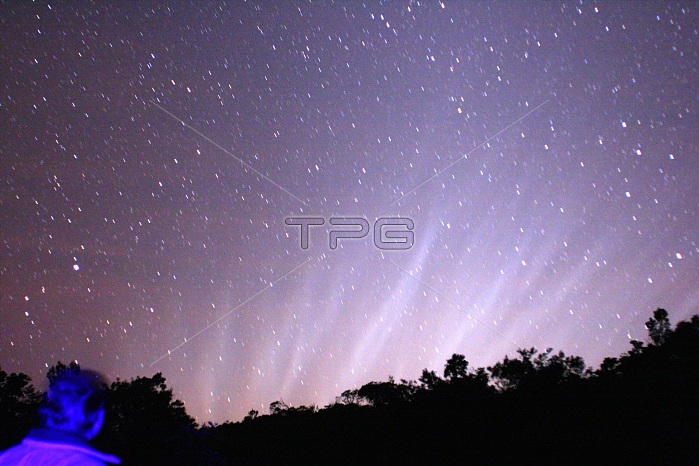
When the head of Comet McNaught (C/2006 P1), the brightest comet since 1965, dipped below the horizon as viewed from the Northern Hemisphere, the tip of its tail remained visible as a series of synchrones projected against the zodiacal light, a glow caused by sunlight scattering off dust particles lying in the ecliptic plane. This view from the 7,000 foot-level of Hawaii's Mauna Loa volcano shows the ray-like synchrones, which are dust particles in a comet's tail perhaps trapped in the sun's magnetic field lines.
| px | px | dpi | = | cm | x | cm | = | MB |
Details
Creative#:
TOP22309928
Source:
達志影像
Authorization Type:
RM
Release Information:
須由TPG 完整授權
Model Release:
N/A
Property Release:
No
Right to Privacy:
No
Same folder images:

 Loading
Loading